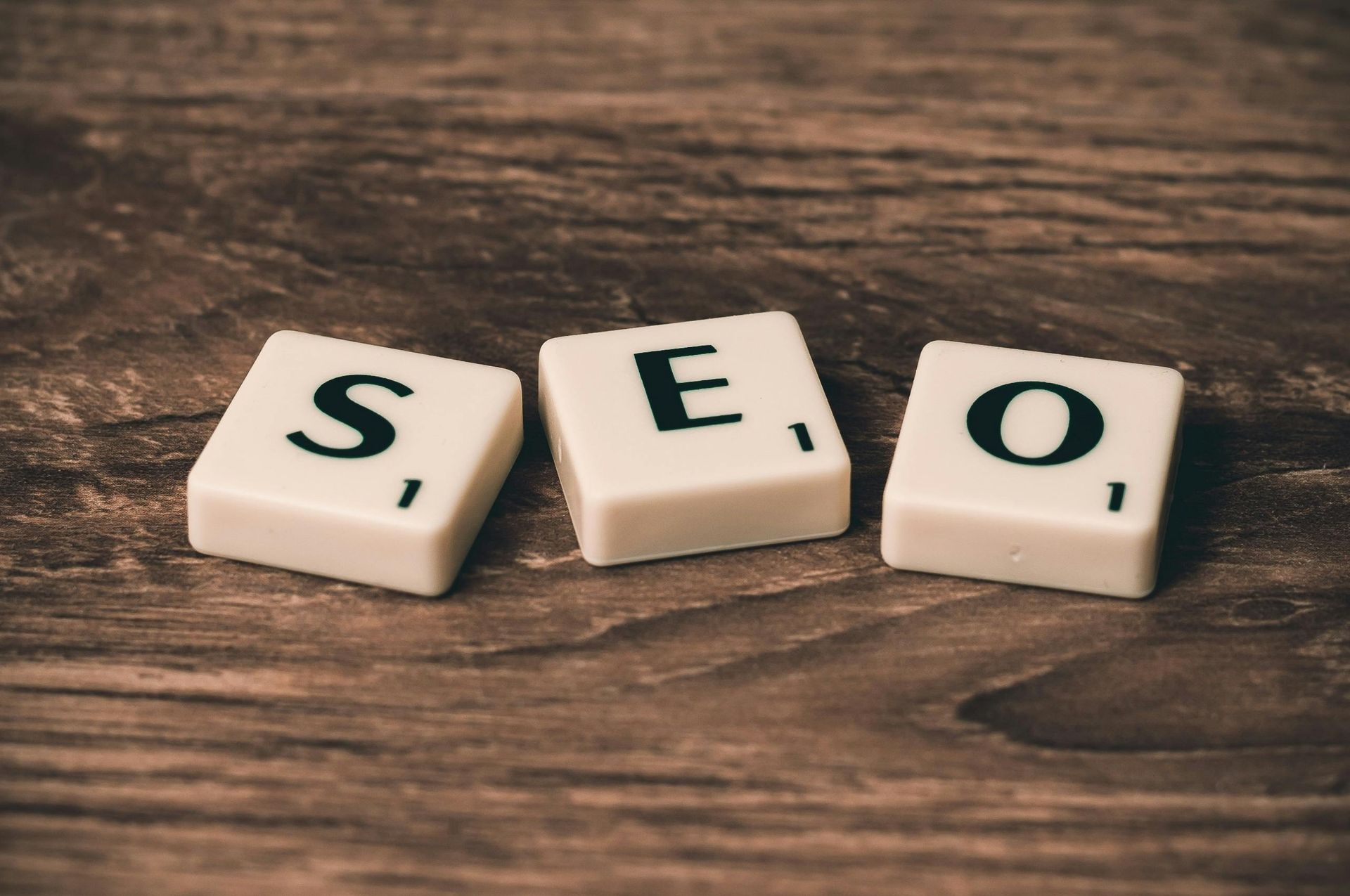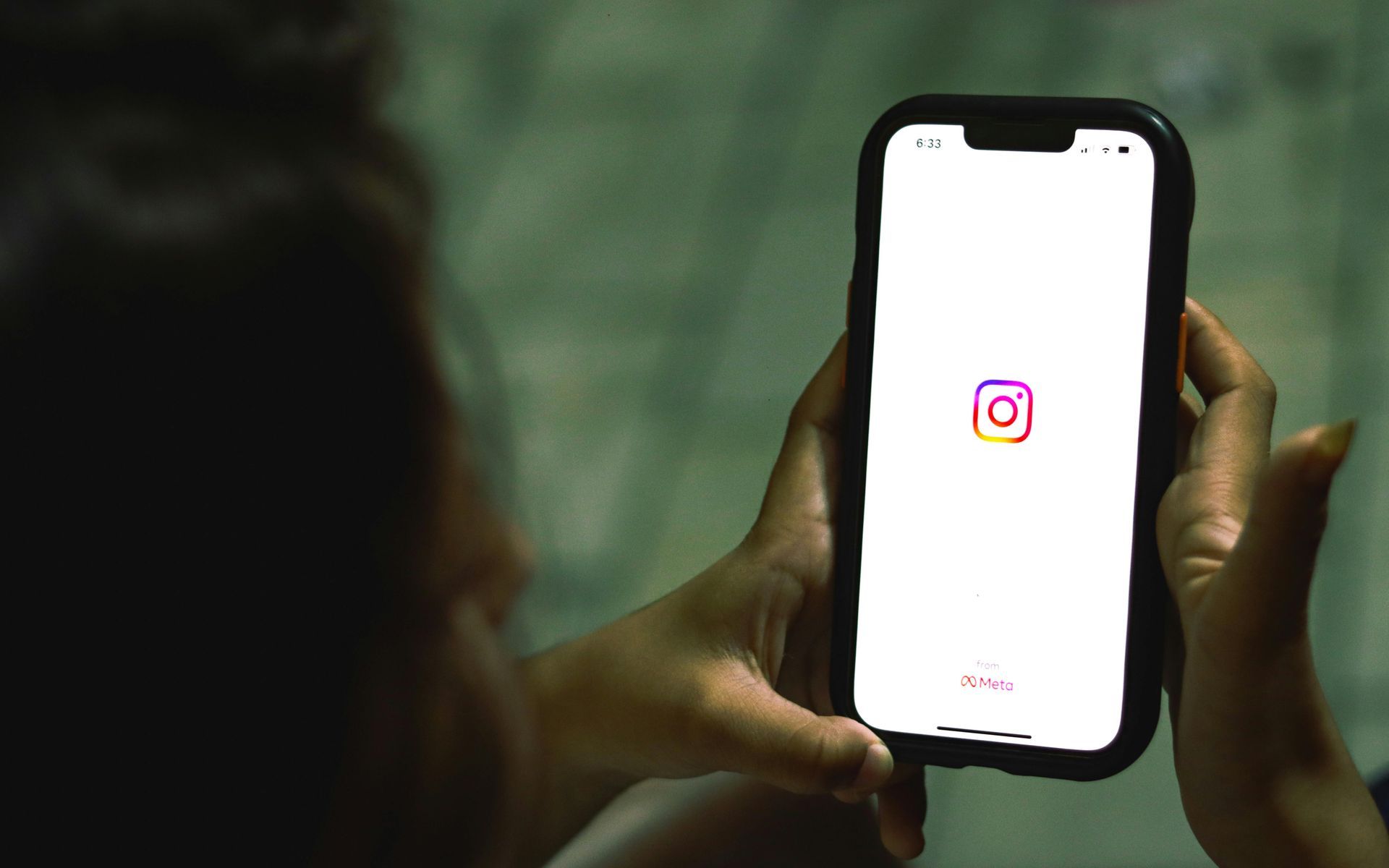Building Brand Awareness for Your Destination with Paid Social Ads
Building Brand Awareness for Your Destination with Paid Social Ads

In today’s competitive tourism landscape, travelers are bombarded with choices, making it more important than ever for destinations to stand out. Building brand awareness is the key to ensuring your destination remains top-of-mind for potential visitors, and paid social advertising offers the perfect opportunity to showcase what makes your location unique.
With Meta Ads (Facebook and Instagram), tourism bureaus can highlight their destination’s distinctive attractions, culture, and experiences to inspire travelers and create lasting impressions. At Hatch Strategies, we specialize in helping tourism organizations craft compelling paid social campaigns that not only drive engagement but also foster long-term brand recognition.
Let’s explore how paid social ads can elevate your destination’s brand and how Hatch Strategies can help you achieve sustainable growth.
Why Brand Awareness Matters for Tourism Bureaus
Before travelers choose where to go, they need to know your destination exists and understand what it offers. Strong brand awareness helps:
- Create Desire: Engaging social ads can captivate potential visitors and fuel their desire to explore your destination.
- Build Trust: Consistent exposure to your destination’s messaging builds familiarity and credibility.
- Drive Consideration: The more people recognize your brand, the more likely they are to include it in their travel plans.
- Encourage Word-of-Mouth Marketing: A well-known destination gets organically shared by social media users, influencers, and travel bloggers.
How Meta Ads Can Help Tourism Bureaus Build Brand Awareness
Meta Ads offer tourism bureaus an unparalleled opportunity to reach a vast audience of potential travelers. Whether targeting adventure seekers, luxury travelers, or family vacationers, Facebook and Instagram provide a platform to visually showcase your destination and build recognition over time.
Key Benefits of Meta Ads for Brand Awareness
1. Visually Compelling Storytelling
- With eye-catching imagery and immersive video content, Meta Ads help paint a vivid picture of your destination.
- Carousel and video ads allow you to showcase multiple experiences, such as scenic views, local cuisine, and exciting activities.
2. Advanced Audience Targeting
- Meta Ads enable tourism bureaus to target travelers based on:
- Interests (e.g., hiking, beach vacations, cultural experiences)
- Demographics (age, family status, income level)
- Behaviors (previous travel searches, intent to book trips)
- Lookalike audiences help expand reach by targeting users similar to your existing visitors.
3. High Engagement Rates
- Travel content naturally performs well on social media, with users eager to engage, share, and save posts for future planning.
- Interactive formats such as polls, quizzes, and stories allow for deeper engagement with potential visitors.
4. Affordable and Scalable
- Meta Ads offer flexible budget options, making them accessible to tourism bureaus of all sizes.
- Campaigns can start with a small budget and scale based on performance and demand.
Types of Meta Ads That Build Brand Awareness
To effectively showcase your destination, it's essential to use the right ad formats that resonate with your audience. Here are some of the best Meta ad types for tourism bureaus:
1. Carousel Ads
- Feature multiple images or videos that highlight different aspects of your destination, such as attractions, local food, and accommodations.
- Example: “Explore the beauty of [Destination]—scroll through our top sights!”
2. Video Ads
- Short, engaging clips that transport viewers to your destination, showcasing landscapes, culture, and activities.
- Example: “Experience the adventure of a lifetime in [Destination]—watch now!”
3. Story Ads
- Full-screen immersive content on Instagram and Facebook Stories that captures attention instantly.
- Example: A 15-second story ad featuring a “Swipe Up” to learn more about travel packages.
4. Lead Generation Ads
- Collect contact details from interested travelers who want more information, allowing tourism bureaus to build an email list for future promotions.
- Example: “Sign up to receive our exclusive travel guide!”
5. Retargeting Ads
- Serve ads to users who have previously visited your website or interacted with your social media content, keeping your destination top-of-mind.
- Example: “Thinking about visiting [Destination]? Book your stay today!”
What is Location-Based Advertising?
Location-based advertising is a powerful marketing technique that tailors advertisements to consumers based on their geographical location. This approach leverages data from GPS, Wi-Fi, and mobile networks to pinpoint where users are and deliver ads that are more relevant to their immediate surroundings.
Imagine walking down a bustling street, and your smartphone directs you to a nearby cafe offering a discount only available at that location. That's location-based advertising at work, offering personalized engagement without the pushy tactics of handing out physical flyers.
Dynamic and Personal
The magic of location-based advertising lies in its ability to dynamically adjust creative elements and messaging. Ad content can shift seamlessly based on whether the viewer is in a metropolitan hub or a rural town, making interactions feel local and personalized.
Marketers can create campaigns that resonate with specific cultural nuances, preferences, and needs without manually creating individual ads for every possible location. Automation tools play a crucial role here, managing the complexities of delivering the right message to the right place effortlessly.
Beyond Just Geographical Presence
It's important to distinguish location-based advertising from other strategies such as ad localization or basic geo-targeting. Unlike merely translating content or selecting specific areas on a map, location-based advertising focuses on crafting messages that speak directly to the consumer's context, enhancing the chances of conversion. It’s not just about reaching people; it’s about speaking directly to them, wherever they are.
In essence, location-based advertising transforms standard marketing into a strategic, location-savvy dialogue that captivates and engages consumers uniquely and effectively.
How Does Location-Based Advertising Increase Customer Engagement?
Location-based advertising transforms how businesses interact with their audience by harnessing the power of personalization. Here's how it drives customer engagement:
- Relevance and Context: By using geographic data, ads can be tailored to align with a user's current location or travel patterns. This ensures the content is not just seen but is also contextually relevant, whether you're at home or on the go.
- Personalized Messaging: Crafting ads that resonate with local experiences or address specific regional interests creates a more personal connection with potential customers. For instance, a restaurant might promote a lunch special more effectively by targeting office workers nearby.
- Advanced Features: Cutting-edge ad formats offer valuable information, such as local directions or real-time store availability, directly within the ad. This convenience encourages users to interact further, bridging the gap between digital impressions and physical visits.
- Immediate Engagement: By providing users with actionable information instantly—like special offers at a nearby store—brands can prompt quicker decision-making, turning interest into immediate action.
Ultimately, location-based advertising leverages the 'here and now,' making interactions more meaningful and immediate. This personalization fosters a deeper connection with audiences, driving engagement that often translates into increased foot traffic and, ultimately, sales.
What Are the Different Types of Location-Based Advertising Techniques?
Location-based advertising (LBA) offers several strategies to connect with consumers where they are. Let's explore some of the key techniques:
- Hyperlocal Targeting
- Hyperlocal targeting is a precision-driven strategy. It focuses on delivering ads to very specific geographic areas, such as neighborhoods or even particular street corners. This technique is perfect for businesses that want to attract foot traffic or highlight local events. With hyperlocal targeting, ads are shared with users at the most relevant times and locations, making the message significantly impactful.
- Broad Location-Based Targeting
- A step up on the geographic scale, broad location-based targeting encompasses larger areas like cities or zip codes. It finds a sweet spot between reaching a broad audience and maintaining relevance. This approach is particularly effective for campaigns that need regional exposure without the granularity of hyperlocal tactics.
- Interest-Based Targeting with Location Insights
- This sophisticated method goes beyond basic location data. By pairing users' interests with their current location, ads become more meaningful. For instance, outdoor enthusiasts might see promotions for hiking gear when they’re near a sporting goods store. This technique enriches the advertising experience by merging consumer interests with geographic context.
- Weather-Triggered Advertising
- Weather-triggered advertising taps into real-time weather data to ensure ads are contextually appropriate. This dynamic approach means offering products like umbrellas when rain is forecasted or sunscreen during sunny spells. It leverages the immediate environment to present timely and relevant offers, enhancing user engagement.
Together, these strategies form a powerful toolkit for marketers, allowing them to tailor messages that resonate with consumers based on their precise location and current circumstances.
How Does Location-Based Advertising Help Capture Multiple Markets?
Location-based advertising</Location-Based Advertising> (LBA) is a powerful tool for businesses looking to expand their reach across diverse markets. By tailoring messages to specific geographic areas, LBA enables brands to speak directly to local audiences while preserving a unified brand message.
Global Reach with Local Precision
- Tailored Messaging: LBA allows businesses to craft messages that resonate with local culture and preferences, ensuring that advertisements connect with the audience on a personal level.
- Increased Engagement: By understanding local consumer behavior and interests, brands can deliver content that's relevant and engaging, increasing the likelihood of interaction and conversion.
- Cohesive Branding: While messages are customized for local markets, the brand's core identity remains intact. This balance allows global campaigns to maintain consistency and leverage brand recognition efficiently.
Effective Across Cities
- Consistency and Flexibility: Campaigns remain coherent across different regions while adapting to local nuances without compromising the brand’s image. For example, McDonald's adjusts their menu items to cater to local tastes without changing their overarching brand mission.
- Real-Time Adaptation: LBA also offers real-time data analysis, allowing brands to tweak their strategies instantly. This agility ensures that even city-specific shifts in market trends are swiftly addressed.
In summary, location-based advertising bridges the gap between global branding and local market relevance, allowing businesses to seamlessly integrate into diverse markets while preserving their brand integrity.
Understanding the Advantages of Location-Based Advertising
Location-based advertising (LBA) offers a powerful tool for businesses aiming to enhance their marketing strategy. By focusing on geographical data, companies can deliver highly relevant and personalized content. Let's delve into the key benefits of this innovative approach.
- Tailored Local Messaging
- One of the standout benefits of LBA is the ability to craft messages that resonate with local audiences. By incorporating local languages, dialects, and cultural references, ads become more engaging. This localized approach transforms a generic campaign into one that feels intimately connected to the community, significantly increasing its impact.
- Scalable Personalization
- LBA excels at adapting personalization to large audiences. Innovative techniques, such as weather-triggered promotions, allow marketers to tailor messages based on local conditions. This not only heightens the ad’s relevance but also creates a personalized experience for each viewer without overwhelming marketing teams.
- Reaching Diverse Markets
- Businesses using LBA can efficiently adapt their messages to different geographic regions. This method ensures campaigns maintain a consistent brand identity while addressing specific local market needs. As a result, businesses can achieve global reach and local resonance simultaneously.
- Boosted Customer Engagement
- When ads are designed to align with a user’s location and interests, they naturally foster a deeper connection. Features like local store directions or region-specific offers bridge the digital and physical realms, driving increased foot traffic and converting online engagement into real-world visits.
- Gaining a Competitive Edge
- In highly competitive markets, LBA aids brands in standing out by highlighting their local involvement. By offering unique, location-specific promotions or demonstrating a commitment to the local community, businesses can attract customers seeking to support local enterprises, thereby capturing greater market share.
In summary, location-based advertising not only enhances targeting precision but also fosters brand loyalty, driving both engagement and sales. By aligning advertising strategies with local dynamics, businesses can unlock new opportunities and achieve significant marketing success.
Understanding How Hyperlocal Targeting Works
Hyperlocal targeting is a sophisticated digital marketing strategy that focuses on reaching potential customers in very specific, narrowly defined geographical areas. Think of it as delivering personalized ads directly to individuals based on their current location, such as the exact neighborhood or even a particular street corner.
Here's how it typically operates:
- Geo-Fencing Technology: This technique uses GPS, RFID, Wi-Fi, or cellular data to create a virtual boundary around a specific location. When a person enters this boundary, they can receive targeted advertisements on their devices.
- Precise Audience Targeting: By honing in on the immediate vicinity of a business or event, businesses can directly engage with individuals who are most likely to respond favorably, such as locals or passersby.
- Real-Time Data Utilization: Marketers use real-time data to analyze and understand users' behavior and movements. This enables them to serve ads that are contextually relevant to the current environment of the user.
- Customized Content Delivery: Ads are crafted to suit local preferences and highlight immediate calls to action, like visiting a nearby store for a sale or checking out a community event.
- Enhanced User Engagement: By offering content that feels "in the moment," it significantly boosts the chance of user interaction, whether it’s tapping an ad, visiting a store, or making a purchase.
This approach is particularly beneficial for businesses that thrive on local traffic, such as retail stores, restaurants, or service providers, ensuring that their advertising efforts are both timely and relevant.
Understanding Interest-Based Targeting with Location Insights
Interest-based targeting with location insights is a sophisticated digital marketing technique that goes beyond standard geolocation advertising. This approach combines user interests with their physical location to deliver more personalized and relevant ads.
How Does It Work?
- User Interest Analysis: Marketers first identify what users are passionate about. This could include hobbies, past purchases, social media activity, and online browsing behavior.
- Location Tracking: Simultaneously, the user's current or past physical location is monitored using GPS or mobile data, allowing advertisers to understand the user's real-world interactions and movements.
- Contextual Ad Delivery: By marrying these two data sets, advertisers can create highly targeted campaigns. For example, someone who loves hiking might receive notifications for discounts on outdoor gear when they are near a sporting goods store.
Why Use This Method?
- Enhanced Relevance: This strategy crafts messages that speak directly to the user's preferences and situations, increasing the chances of engagement.
- Improved Conversion Rates: When advertisements resonate with users by aligning with their interests and immediate surroundings, they're more likely to take action, resulting in better ROI for advertisers.
- Increased Customer Satisfaction: Tailored ads that consider user context are less intrusive and more appreciated, leading to improved brand perception.
In summary, interest-based targeting with location insights creates a dynamic bridge between digital interest profiles and the physical world, offering a refined, consumer-centric approach to advertising.
Exploring Location-Based Targeting Techniques
Location-based targeting is a powerful tool in the marketer's arsenal, offering several distinct strategies to reach your audience effectively. Here’s a breakdown of the various techniques available:
- Hyperlocal Targeting
- Hyperlocal targeting is about precision. It hones in on very specific areas, down to neighborhoods or individual street corners. Perfect for businesses looking to drive immediate foot traffic or spark interest in local events, this technique ensures your ads are delivered to users who are in the exact vicinity at the right time, increasing relevance and engagement.
- Broad Location-Based Targeting
- This method involves targeting larger regions such as entire cities or ZIP codes. It strikes a balance between reaching a wide audience and maintaining relevance. Broad location-based targeting can be ideal for campaigns that don't need to be pin-point specific but still want to reach users in a defined area. Think of regional promotions or city-wide events as prime examples where this method shines.
- Interest and Location Synergy
- Going beyond mere geographic data, this technique uses insights into user interests, combined with their location, to deliver highly relevant ads. For example, promoting outdoor equipment to nature enthusiasts when they're nearby hiking trails or outdoor stores. This approach enriches your targeting strategy by linking personal interests with real-world contexts, maximizing engagement.
- Weather-Responsive Advertising
- Real-time weather conditions can significantly impact consumer behavior, and leveraging this through weather-responsive advertising can enhance your marketing efforts. This technique tailors messages based on current weather—offering products like rain gear during a downpour or promoting sunscreen and hats when it’s sunny. It’s a dynamic way to ensure your advertising is both timely and contextually relevant.
By utilizing these varied techniques, marketers can effectively craft their messages to align with where their audience is, both physically and in their interests, ensuring a higher level of engagement and conversion.
Unlocking Competitive Advantage with Location-Based Advertising
In today's bustling markets, standing out is key. Location-based advertising (LBA) provides a unique edge by leveraging geographical data to tailor marketing efforts. Here's how LBA can offer a competitive advantage:
- Local Engagement: By emphasizing local involvement, businesses can connect more personally with communities. People love supporting nearby establishments, and LBA taps into this sentiment.
- Exclusive Offers: Crafting unique, location-specific promotions can entice customers to choose local businesses over larger, more impersonal brands.
- Community Connection: LBA allows businesses to align themselves with local events or happenings, fostering a sense of community and belonging.
By prioritizing these strategies, businesses can effectively capture market share, ensuring they remain relevant and preferred choices in their locales.
How Location-Based Advertising Boosts Localized Messaging in Video Ads
Video ads have immense potential on social media platforms, but the real game-changer comes with effective localization. Here’s how location-based advertising takes your messaging to the next level:
- Speak the Local Language: Utilize local dialects and slang to resonate with your audience. It’s about connecting on a cultural level, making the viewer feel like the ad is speaking directly to them.
- Feature Local Icons and Landmarks: Incorporate well-known local sights or events into your ads. This not only grabs attention but also creates a sense of familiarity and relevance.
- Utilize Area-Specific Data: Leverage local statistics or events to tailor your message. Whether it’s highlighting a local sports victory or addressing a community concern, your ad will stand out by being impactful and timely.
- Elevate Engagement: By crafting ads that viewers feel are part of their local community, you increase engagement rates. People are more likely to interact with content that feels personal and relatable.
- Build Community Trust: Ads that align with local values and interests foster trust and loyalty. This connection makes viewers more receptive to your message, enhancing conversion rates.
Location-based advertising isn’t just about where your ad appears; it’s about integrating into the daily lives of your audience, creating ads that don't just target a location but become part of it.
Maximizing Impact with Location-Based Strategies
Location-based strategies offer a dynamic approach to achieving personalization at scale. By tailoring messages according to geographic data, advertisers can create customized experiences for large audiences.
1. Enhanced Engagement:
- Ads that consider local factors, such as weather and events, resonate more with viewers. This relevance boosts engagement by offering content that feels uniquely tailored to the individual.
2. Seamless Integration:
- Technologies like weather-triggered advertising enable companies to deploy specific messages when certain conditions are met. For example, a retailer might promote rainwear during storms, making the ad timely and relevant without extra effort from the marketing team.
3. Improved Response Rates:
- Personalization driven by local data improves response rates. By aligning ads with viewers' immediate surroundings, it fosters a connection that generic campaigns often miss.
4. Efficient Resource Use:
- Location-based strategies automate the personalization process. Companies can target expansive audiences efficiently, ensuring that the team isn’t overwhelmed by manual customization efforts.
In summary, location-based strategies effectively bridge the gap between mass reach and personalized marketing, harnessing geographic insights for powerful, tailored advertising.
Success Stories of Location-Based Advertising
Location-based advertising has revolutionized how businesses target and interact with their audiences, leading to successful campaigns across various industries. Here are two noteworthy examples that highlight the potential of this approach.
Adventure Travel Company
A leading adventure travel company in Canada was facing challenges with localizing their ad campaigns. Given their global focus, targeting specific travel destinations necessitated precise location data for effective ad targeting. This task was daunting due to the need for multiple ad versions tailored to different regions.
By employing advanced data management and creative production tools, the company was able to effectively segment its advertising efforts. This solution allowed them to produce a high volume of visually appealing image and video ads. As a result, the campaign setup time was significantly reduced, enhancing their ability to reach the right audience efficiently.
Retail Giant's Hyper-Localized Campaign
A major retailer with numerous outlets across Belgium contended with the complexities of promoting its stores and products. The challenge was to advertise specific products available at certain stores to individuals located within a specific radius.
Partnering with a creative agency, the retailer developed a strategy to automate the creation of hundreds of unique advertisements while incorporating localized product promotions. This approach streamlined the process, minimizing repetitive tasks and enabling precise, location-specific engagement with potential customers. The result was a successful, hyper-localized ad campaign that effectively connected the retailer with its target market.
These case studies illustrate how powerful location-based advertising can be when paired with strategic tools and creative execution. By focusing on localized content and automation, brands can overcome logistical challenges and connect with consumers more personally and efficiently.
Is Location-Based Advertising Right for You?
Determining if location-based advertising aligns with your strategies involves considering key objectives and how this approach can address them.
- Attract New Clients Efficiently
Seeking to expand your client portfolio? Location-based advertising allows you to craft highly targeted campaigns that resonate locally. By doing so, you’re more likely to capture the attention of businesses focused on specific geographic areas, opening up new opportunities for collaboration. - Strengthen Client Relationships
Building long-term connections with clients is about more than just delivering results. Personalized ads tailored to precise locations can create deeper emotional connections with the audience. This not only enhances campaign outcomes but also strengthens your client’s loyalty by showcasing your dedication and expertise. - Maximize Campaign Impact
By utilizing the precision of location-based targeting, you can streamline media spends and maximize ROI. Automation tools tailored to this technique can manage multiple campaigns effortlessly, ensuring that resources are employed efficiently. This reduces overhead and increases the impact of every marketing dollar.
Location-based advertising is an excellent choice for marketing agencies wanting to refine their strategies, foster meaningful client relationships, and achieve significant performance boosts without overextending resources.
Streamlining Ad Buying Across Platforms Like Meta and Snapchat
In the fast-paced world of digital advertising, reaching a broad audience efficiently is crucial. Platforms such as Facebook, Instagram, and Snapchat are pivotal, with billions of active users globally. Advertisers looking to place location-based ads can leverage these networks for their unmatched audience diversity.
Automating Ad Processes
To simplify ad creation and management, adopting automated creative tools is essential. These platforms support advanced features that allow advertisers to produce personalized and visually appealing ads quickly. By using AI-driven tools like background removal, dynamic templates, and color discovery, brands can significantly reduce the time and effort required for ad customization.
Enhancing Campaign Efficiency
- Unified Ad Creation: Advertisers can streamline processes by using automated platforms that integrate seamlessly with Meta and Snapchat. These platforms guide advertisers through a three-step process: building a list of target locations, designing dynamic ads, and quickly launching campaigns. This structured approach ensures ads remain pertinent and reflect real-time inventory or seasonal changes.
- Data Feed Integration: Directly connecting data feeds to these platforms ensures that your advertising strategies are always in tune with current inventory, enabling timely and impactful campaigns.
Maximizing Engagement and Conversion
For heightened campaign success, leveraging AI tools can optimize ad performance by enhancing engagement and conversion rates. Automation tools can eliminate manual complexities, resulting in improved targeting and more resonant ad content. By deploying these cutting-edge tools, advertisers unlock the full potential of their campaigns, delivering messages effectively to their target audiences while boosting sales across different markets.
In summary, by integrating automation with strategic use of these robust social platforms, advertisers can effortlessly navigate the complexities of placing ads across diverse global markets, ensuring impactful and high-performing campaigns.
Best Practices for Running Paid Social Ad Campaigns for Brand Awareness
To ensure your destination’s brand awareness campaigns are successful, follow these best practices:
1. Create a Consistent Visual Identity
- Use high-quality, consistent imagery and branding to establish a recognizable identity across all ads.
2. Craft Compelling Ad Copy
- Inspire travelers with emotional, experience-driven messaging such as:
- “Escape to paradise in [Destination].”
- “Discover hidden gems and unforgettable adventures.”
3. Leverage Social Proof
- Include traveler reviews, testimonials, and influencer collaborations to build credibility and trust.
4. Test and Optimize Continuously
- Run A/B tests to determine which ad formats, visuals, and messaging resonate best with your target audience.
5. Encourage Engagement and Shares
- Create ads that prompt users to comment, tag friends, and share your content to expand organic reach.
How Does Weather-Triggered Advertising Enhance Ad Relevance?
Weather-triggered advertising leverages the power of real-time meteorological data to customize advertisements based on current weather conditions, adding a layer of personalized relevance for consumers.
- Personalization with Precision
- By tapping into real-time weather data, businesses can craft ads that resonate with a user's immediate environment. For instance, if it starts to rain, an ad might suggest umbrellas, waterproof gear, or cozy indoor activities. Conversely, on sunny days, promoting sunscreen, sunglasses, or outdoor attractions feels intuitive and timely.
- Contextual Relevance
- This approach ensures that ads are not just tailored by location but are also contextually appropriate. For example, during a heatwave, offering ice cream or air conditioning units captures consumer interest more effectively than generic promotions.
- Increased Engagement and Conversions
- When consumers see ads that align with their current circumstances, they are more likely to engage. Weather-triggered ads cut through the noise of irrelevant messages, potentially increasing click-through rates and driving higher conversions as people are presented with solutions to their immediate needs.
- Adapting to Customers' Moods
- Weather can significantly influence mood and purchasing decisions. On cloudy days, promoting online entertainment or cozy home decor might be appealing, boosting the advertisement’s impact by connecting emotionally with the audience.
In summary, weather-triggered advertising ensures that your marketing messages are timely, relevant, and personalized, enhancing the likelihood of engagement and sales by directly addressing the consumer's current situation and needs.
How Hatch Strategies Helps Tourism Bureaus Build Brand Awareness
At Hatch Strategies, we specialize in helping tourism bureaus maximize their paid social advertising efforts to build brand awareness and drive long-term growth. Our team combines data-driven strategies with creative storytelling to ensure your destination stands out.
How We Help:
- Strategic Campaign Development: We craft tailored ad campaigns that align with your destination's goals and target audience.
- Precise Audience Targeting: Leveraging Meta’s advanced targeting tools, we ensure your ads reach the right travelers at the right time.
- Content Optimization: We provide guidance on visuals, ad copy, and storytelling to maximize engagement.
- Performance Tracking & Reporting: We continuously monitor campaign performance and adjust strategies to optimize results.
- Multi-Channel Integration: We create seamless marketing strategies that combine Meta Ads with other digital efforts like Google Ads and email marketing.
Conclusion: Elevate Your Destination’s Brand with Paid Social Ads
Building brand awareness for your destination takes more than just organic social media posts—it requires a strategic, data-driven approach with Meta Ads at the core. By combining stunning visuals, compelling messaging, and precise targeting, tourism bureaus can attract potential visitors, inspire them, and ultimately drive bookings.
Partner with Hatch Strategies to craft a customized social ad strategy that puts your destination in the spotlight and keeps it there.
Ready to boost your tourism brand? Contact us today to get started with a results-driven paid social campaign that delivers lasting impact.
For more expert insights on tourism marketing, follow our blog or reach out to our team at Hatch Strategies! 🚀












